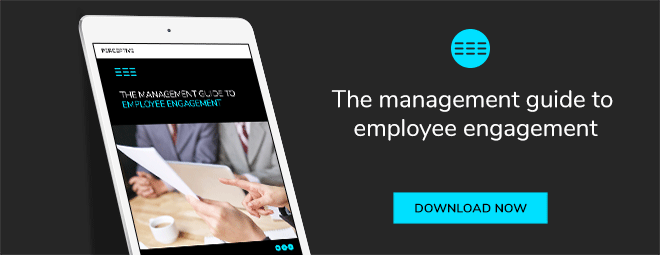Only 23 per cent of the world's workforce feel engaged with their work. While this percentage has increased over the last decade, the number is still alarmingly low, especially when compared to the employee engagement of best-practice organisations, which sits at 72 per cent. Add the fact that 59% are quiet quitting and 18% are loud quitting (i.e. actively disengaged), and it's a dire picture indeed.
It's understandable, then, why so many businesses are putting the focus on reaching out to their staff and providing a workplace that is both productive and fulfilling.
These are just a few of the techniques that companies are using to successfully reignite their staff's passion for their profession.
Related content: The 10 Pillars of Employee Experience
1. Inspire trust
As a leader, you need a clear vision. If nothing else, for the reason that people simply need to know what to follow. Step one is developing a strong sense of purpose. If you have a mission that inspires and lights up the eyes of your staff, this will drive them to achieve.
When your success as a business derives from a mission or vision that delivers value to both your customers and all stakeholders (including staff), you will see the results. Finding a vision that delivers benefit to one and all is important and worth spending a lot of time crafting.
2. Manage well and with purpose
While the CEO is busy creating strategies, middle management are making things happen. Managers set goals, support people, coach and provide feedback for continuous improvement. A direct way to improve engagement is to invest in managers so that they can do their job better.
A recurring issue for businesses is having simple, clear goals for staff. This creates an alignment and sense of purpose of the job that needs to be done, and essentially more job satisfaction.
Look at your goals regularly and if they don't make sense to how your business is progressing, refine them.
3. Create an awesome culture
Creating a happier work environment starts with being able and willing to listen to what employees want and value. Create a place where people want to stay and hang out. A positive working environment is one that encourages people to do a great job instead of putting them down when they haven’t.
This means:
- Making work results-driven
- Providing constructive feedback
- Allowing flexibility in terms of hours and place of work
- Recognising and rewarding excellent achievers.
A flexible and supportive working environment is a crucial factor given the nature of work today and will encourage employees to enjoy their place of work.
4. Create opportunities for growth
Not surprisingly, research from across New Zealand, Australia and the UK found the number one reason employees recently quit or are considering quitting was due to a lack of career opportunities.
Recent research on employee engagement shows that learning and development opportunities is the second most important factor in employee satisfaction. Moreover, employees that don't have access to meaningful growth opportunities are twice as likely to leave within a year.
Knowing where the company is going and how each individual can contribute is a very important factor in making sure your employees stay with you.
5. Make work meaningful
According to one report, "meaningful work is the most important aspect of a job—ahead of income, job security, and the number of hours worked".1 But what do we mean when we say meaningful work?
In this instance, "meaningful work" will vary from person to person. Where one person may find meaning in work that benefits the community or society, another may find meaning in helping their team achieve its goals or receiving recognition for work well done or personal growth achieved. Similarly someone who finds meaning in helping customers may not necessarily experience satisfaction in helping their company achieve its vision or becoming a leader in its industry.
With this in mind, it's important to approach meaningful work from a variety of angles. From recognising employees for their work and relaying positive customer feedback to communicating how employees are helping the company and the community, there are many ways to ensure your employees feel valued.
Importantly, employees need time for activities that don't involve work at all. Being able to have thinking time, adequate rest and extracurricular activities is another key driver for engagement.
Make employee engagement at the centre of everything you do and you won’t fail.
Learn more about employee engagement strategies by downloading our free ebook below!
1. Bromley, T., Lauricella, T., and Schaninger, B. Making work meaningful from the C-suit to the frontline, McKinsey & Company, www.mckinsey.com, 28 June 2021.

